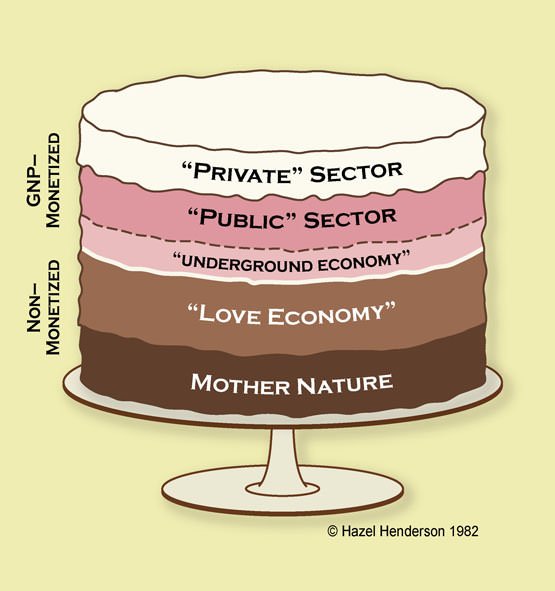Textbook (neoclassical) economics is ingrained with a set of masculine values that privilege the centre of an autonomous, rational agent who interacts with others when it is in his best interests to do so. The ideas of scarcity, competition, and exchange assume great importance along with models with a “universal” but identity blind and ahistorical worldview.
The logic and rhetoric of neoclassical economics cannot give space to the standpoints of feminists and marginalized groups. The moment one erases history and identity, one loses the ability to engage with these standpoints. Since a narrow and particularist understanding of human nature is hailed as universal, a set of problematic assumptions and arguments are legitimized
The Classical Political Economy originated in Britain and was dominated by men voicing the concerns and perspectives of the emerging industrialist class. The Classical Political Economy’s unstated, but implicit views of women are:
- All women are married, or will eventually be. Similarly, all women have or will have children.The neoclassical paradigm continues to plead allegiance to Victorian ideology.
- All women are (and ought to be) economically dependent on a male relative
- Women are (and ought to be) housewives, their reproductive capacities specialize them for that function.
- Women are unproductive (whether absolute or relative to men is not always clear) in the industrial workforce.
- Women are irrational, they are unfit as economic agents.
These assumptions worked towards rationalizing and legitimizing women’s exclusion from the public realm of economics which is the market. The neoclassical paradigm continues to plead allegiance to Victorian ideology.
Popular economists such as Marshall, Pigou, Edgeworth, and Jevons vehemently opposed the presence of women in the labour market. Women’s productive labour was not understood as a contribution to economic welfare but was instead problematized as a threat to national welfare.
The Classical Political Economy originated in Britain and was dominated by men voicing the concerns and perspectives of the emerging industrialist class.
The economists argued for the maintenance of barriers to women’s entry into certain occupations using the Factory Act (1930) and instead advocated a “family wage” for men (whether or not they had a family to support), since women are conceived as economic dependents and would have no need to earn income with such provisioning.
However, late 19th and early 20th century England in effect had a significant proportion of women that were unmarried, and married women had little economic support from their husbands. Women were present in the labour force in large numbers and were exploited and underpaid severely.
These women were not perceived as autonomous agents that can exercise rational decision-making but were seen as defying what is claimed to natural to them and that in which they have a comparative advantage: the (mother) caretaker in the sexual division of labour and were consequently blamed for rising infant mortality. The starvation level wages and resulting unsanitary standard of living within the working class household were not explored as a cause. It would be interesting to further explore what unstated and implicit assumptions the neoclassical paradigm offers pertaining to workers employed within sweatshops and the comparative advantage they offer in the global division of labour.
It is crucial to recognize that the neoclassical paradigm does not allow women and other marginalized groups (eg: citizens of “third world” countries) to behave as rational agents for it is rooted in such Victorian ideology. The very logic and rhetoric of neoclassical economics built upon Pareto optimality (the allocation of resources in the economy is such that no one can be made better off without making somebody else worse off) is one that necessitates sexist and imperialist assumptions that legitimize hierarchy.
Pareto optimality is not a value-neutral concept and the value-ladenness of efficiency has become more rigid with time. This notion of efficiency does not account for non-market activities (reproductive labour), assumes the existence of autonomous agents who don’t take each other’s wellbeing into account until it does not add to their own utility. The utility of these agents cannot be compared and so, there can be no trade-off for the sake of greater equity without disturbing efficiency. These implicit assumptions raise an essential question: efficiency for whom?
Women perform reproductive labour at home that has a use value for the labour market and beyond. A purported efficiency gain in the market by downsizing services such as healthcare shifts healthcare burdens to the domain of reproductive labour or the care economy, without the benefits of economies of scale, professionally trained staff experienced in the market, etc., and effectively results in greater inefficiency for the economy.
Women’s productive labour was not understood as a contribution to economic welfare but a threat to national welfare.
Charlotte Perkins Gilman, writing in 1898, attempts to conceive of meaningful efficiency as an endogenous balance in production that reduces waste in the market, by the state, and in the care economy. This balance is a contextual one depending on tradeoffs and positive externalities between these three domains of production. Within such a framework, an increase in equity corresponds to greater efficiency for greater equity allows for distributive efficiency wherein what is wanted and needed is what is produced.
The process of wage-setting plays a crucial role in sustaining hierarchy and positioning the marginalized in spaces that render their lives precarious. Feminist economists Marilyn Power, Ellen Mutari, and Deborah M Figart explain wage setting as a social construction rather than a price that reflects the worker’s productivity within a labour market that is impartial to gender, race, ethnicity, etc.
In practice theory, gender is one possible organizing principle of social structures and gender relations are continually reproduced or transformed through a series of social practices. Wages are understood to be a social practice that enforces implicit beliefs that seek to order society hierarchically on gendered, raced, classist, etc., lines. Therefore, the process of wage setting becomes a means to establish and reinforce what people belonging to these different categories of identity should be doing and how they should live.
Neoclassical economics must be understood as a set of practices with androcentric, Eurocentric, and class-exploitative political commitments that appear value-neutral. The production of knowledge lends itself to particular goals and the desirability of goals in terms of ethical and political standards must be studied.
Feminist economics is in effect a challenge to dualist thinking that privileges the centre of an autonomous rational agent driven by self-interest while marginalizing any voices that do not subscribe to the fear of scarcity and the narcissism of self-interest. Feminist economics must struggle with the project of inclusion and locate the standpoints of the marginalized. Yet, the project is one that has the potential to engage with larger questions of social justice and battling the apathy of textbook economics.
Also Read: The Difficult Art Of Being A Feminist In An Economics Classroom
Featured Image Credit: Community Partnering
About the author(s)
I'm pursuing a major in Economics and a double minor in film studies and peace and conflict studies and I strongly believe in the importance of words, particularly the ones that are left out.



